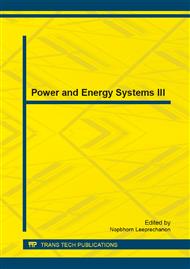p.375
p.380
p.386
p.392
p.397
p.407
p.412
p.418
p.426
Electromagnetic Materials Design for the Enhancement of the Microwave Power Transmission through Polymeric Slabs
Abstract:
In order to improve the energy transmission of an electromagnetic wave in microwave frequency regime propagating through a slab made of a polymeric material, we integrated conductive metamaterials particles in the polymeric medium and used an optimization method for determining the overall size and geometrical characteristics of the metamaterial element that can meet the desired energy transmission requirements. The numerical results show that to attain high transparency the effective parameters of the homogenized medium can be manipulated as required by optimizing the geometry of the metamaterial, the unit cells size and their distribution. To validate this design approach, we present the results of the experimental tests conducted on a 300 mm x 300 mm x 4 mm board with optimized metamaterials structures.
Info:
Periodical:
Pages:
397-404
Citation:
Online since:
January 2014
Authors:
Price:
Сopyright:
© 2014 Trans Tech Publications Ltd. All Rights Reserved
Share:
Citation:


